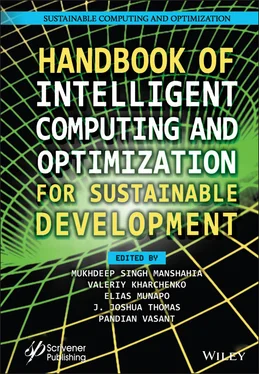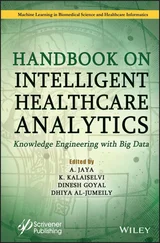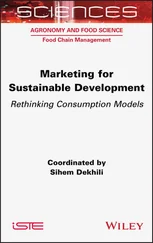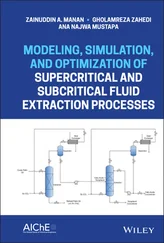Handbook of Intelligent Computing and Optimization for Sustainable Development
Здесь есть возможность читать онлайн «Handbook of Intelligent Computing and Optimization for Sustainable Development» — ознакомительный отрывок электронной книги совершенно бесплатно, а после прочтения отрывка купить полную версию. В некоторых случаях можно слушать аудио, скачать через торрент в формате fb2 и присутствует краткое содержание. Жанр: unrecognised, на английском языке. Описание произведения, (предисловие) а так же отзывы посетителей доступны на портале библиотеки ЛибКат.
- Название:Handbook of Intelligent Computing and Optimization for Sustainable Development
- Автор:
- Жанр:
- Год:неизвестен
- ISBN:нет данных
- Рейтинг книги:5 / 5. Голосов: 1
-
Избранное:Добавить в избранное
- Отзывы:
-
Ваша оценка:
- 100
- 1
- 2
- 3
- 4
- 5
Handbook of Intelligent Computing and Optimization for Sustainable Development: краткое содержание, описание и аннотация
Предлагаем к чтению аннотацию, описание, краткое содержание или предисловие (зависит от того, что написал сам автор книги «Handbook of Intelligent Computing and Optimization for Sustainable Development»). Если вы не нашли необходимую информацию о книге — напишите в комментариях, мы постараемся отыскать её.
This book provides a comprehensive overview of the latest breakthroughs and recent progress in sustainable intelligent computing technologies, applications, and optimization techniques across various industries.
Audience Handbook of Intelligent Computing and Optimization for Sustainable Development
Handbook of Intelligent Computing and Optimization for Sustainable Development — читать онлайн ознакомительный отрывок
Ниже представлен текст книги, разбитый по страницам. Система сохранения места последней прочитанной страницы, позволяет с удобством читать онлайн бесплатно книгу «Handbook of Intelligent Computing and Optimization for Sustainable Development», без необходимости каждый раз заново искать на чём Вы остановились. Поставьте закладку, и сможете в любой момент перейти на страницу, на которой закончили чтение.
Интервал:
Закладка:
Keywords:5G, beyond 5G, wireless communication, machine learning, modulation classification, MIMO, data science
5.1 Introduction
Recent advancement in computing systems has led to proliferation in use of machine learning (ML) and deep learning (DL) algorithms. These are used to solve the classification, estimation, and optimization problems for wireless systems which include modulation classification, signal detection, channel estimation, and resource allocation (RA) to name a few [1, 2]. Even though the ML is extensively applied in various application areas, its use in communications systems is still uncultivated [1, 3–5]. DL is the subset of ML paradigm. The key effect of applying the DL in the communications systems has been computational complexity issues and availability of benchmark data sets [6, 7]. DL typically consists of two stages named as training and testing. In the first stage, a huge data is passed through DL networks to generate a trained model, and training stage always runs with billions of computations. In the testing phase, data set other than the training data set is offered to the network model to deduce a outcome, and this stage needs to conclude in a desired time period [8, 9]. In practical implementation of real communications systems only the testing phase is applied. The training phase is usually completed offline. A trained DL model can thus achieve multiple objectives without the need for retraining [10, 11].
With the increased demand for higher data rate services supporting multimedia, video, voice, and Internet of Things (IoT) application over wired and wireless links, new model-driven signal processing algorithms provide feasible solution to massive connectivity. These techniques should possess capability to provide high data rate at permissible Quality of Service (QoS), with ultra-reliable low latency (URLL) [12]. To meet the above requirements, future wireless network use ML algorithms as one of the key solutions. Artificial intelligence (AI)/ML algorithm potentially can provide intelligent future networks along with desired URLL [13, 14]. In wireless systems, a ML-based algorithm can be applied at the transmitter side, either to enhance the performance of single block or jointly at transmitter and receiver to develop an intelligent wireless system. Most of the present (4G) and future wireless systems (5G) are employed with orthogonal frequency division multiplexing (OFDM) in conjunction with massive multi-input multi-output (MIMO) technology to provide desired service standards [9, 15, 14]. The advancement of intelligent terminals and promising new applications (e.g., real-time and communicating services), wireless communication data traffic has radically enhanced, and existing wireless systems (even an upcoming 5G) cannot entirely meet the quickly rising technological requirements [13, 16, 17]. To meet these upcoming challenges, the beyond 5G (B5G) or sixth-generation (6G) wireless network is anticipated to explore the novel radio spectrum standards and energy-efficient transmission techniques along with intelligent wireless networks [2, 18].
To address the future upcoming challenges, a comprehensive review of existing literature has been performed in this chapter. Further, case studies on automatic modulation classification (AMC) and channel state information (CSI) feedback for frequency division duplexing (FDD) massive MIMO system has been carried out using novel DL techniques. The simulation results for the proposed method for AMC shows up to 10% improvement in the prediction accuracy compared to the existing baseline model [19]. In case of CSI feedback in massive MIMO, implementation results using the proposed algorithm have shown superior recovery of the channel matrix with cosine similarity of around 5% and the reduction in normalized mean square error (NMSE) is approximately 2 dB for different compression ratios in comparison to the baseline network [20].
Following the introduction, the organization of the chapter is as follows: Section 5.2provides a comprehensive review of ML and DL techniques for future wireless communication system. Section 5.3provides the two case studies based on our present work. Section 5.4presents the major findings of the overall study. Section 5.5discusses the future direction in field of ML-enabled next-generation wireless communication. Finally, Section 5.6concludes this chapter.
5.2 Machine/Deep Learning for Future Wireless Communication
A typical wireless communication system comprises of a transmitter, channel, and receiver. The design of the transmitter and receiver is described by the channel model and its underlying physical phenomenon [21]. Signaling schemes are developed corresponding to system’s requirements, such as ease of implementation, robustness to channel impairments, and transmit power minimization [6]. Likewise, detection algorithms are devised to enhance system performance subject to the constraints. Generally, a frequency below 10 GHz are utilized by the current wireless communication systems. In these systems, the channels adapt to flexible mathematical models that define electromagnetic propagation with rational accuracy. However, in other systems, the channel models are not easily described. ML concept mostly considered as a tool has created a revolution in modern day computing over the past years [22]. With easier to handle with today’s hardware and software solutions, ML has created a diverse range of algorithms that has enabled the development of intelligent, fast, and adaptive systems. Many applications such as unmanned armed vehicles, navigation systems, and big data analysis have efficiently proved the need and importance of DL, rather than using traditional strict and complex algorithms. DL is basically a sub decision of ML. Mostly DL is being used for prediction, processing of data, analysis of data, and classification of data [11]. Some of the fields where DL is immensely used are computer vision, image processing, and stock market data predictions which are very important part of our day-to-day life [23]. Our daily used products such as personal computers, laptops, mobile phones, and tablets use DL where every upgrade comes with a new technique used. Much research on DL and its application are being done every day and researchers are making use of all possible methods to utilize it efficiently for the modern wireless communication scenarios. The modern-day wireless communication deal with the need of increasing high data rates, demand of much more bandwidth, and many more radically used applications, which, in turn, requires novel signal processing techniques [2].
When we consider the use of millimeter wave (mmWave) spectrum, it addresses the issue of need for more bandwidth and high data rate because of its nature. For example, when we consider mmWave precoding, the use of DL for predicting the precoding matrices has shown to reduce the channel training overhead when compared traditional singular value decomposition methods [9]. The computational complexity of the problem is taken care of by using DL, because of its ability of learning from data. The applications of wireless communications involving real-time scenarios such as data monitoring and video streaming, which play a major part of modern day, have improved a lot today because of the growing usage and new research being done in DL. The classification of digital and analog modulating signals is done with some key features in [25]. DL/ML has wide range of applications in the wireless communication systems as can be seen in Figure 5.1. The some of the most relevant and in scope of this study are discussed in detail. DL as discussed previously is a subbranch of ML and is considered in our application because of its capability to handle much larger data sets, creating a more complex neural network (NN). The major difference between them is that ML is used for small signal data, whereas DL is used for high dimensional data and has a good performance in real-time scenarios. Some popular algorithms in DL are convolutional neural networks (CNN), recurrent neural networks (RNN), long short-term memory networks (LSTMs), stacked auto-encoders, deep Boltzmann machine (DBM), and deep belief networks (DBNs) [26]. Every algorithm is uniquely designed and has many wide range of applications in wireless communication. A few of them are discussed in the subsequent subsections. These wireless applications are chosen based on their popularity and suitability for ML/DL algorithms.
Читать дальшеИнтервал:
Закладка:
Похожие книги на «Handbook of Intelligent Computing and Optimization for Sustainable Development»
Представляем Вашему вниманию похожие книги на «Handbook of Intelligent Computing and Optimization for Sustainable Development» списком для выбора. Мы отобрали схожую по названию и смыслу литературу в надежде предоставить читателям больше вариантов отыскать новые, интересные, ещё непрочитанные произведения.
Обсуждение, отзывы о книге «Handbook of Intelligent Computing and Optimization for Sustainable Development» и просто собственные мнения читателей. Оставьте ваши комментарии, напишите, что Вы думаете о произведении, его смысле или главных героях. Укажите что конкретно понравилось, а что нет, и почему Вы так считаете.












